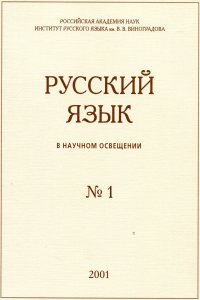The Slavic future anterior and its Greek correspondences in translated medieval Church Slavonic monuments
Abstract:
The paper is devoted to the Slavic future anterior in Church Slavonic texts translated from Greek. Special attention is given to the structure of Greek correspondences, which helps elucidate grammatical-semantic properties of the Slavic future anterior, since it rarely calques Greek structures. The translation of Greek constructions by means of the Slavic future anterior can be regarded as functional. The most frequent Greek correspondent of the Slavic future anterior is the indicative aorist. This can be accounted for, on the one hand, by the expansion of aorist into the semantic zone of the perfect in the Middle Greek and, on the other hand, by the contexts in which Slavic future anterior is used to translate a Greek aorist, such as: the so-called aorist pro futuro, conditional or relative clause, general question, presence of modal epistemic particles. Consequently, the Slavic future anterior more often served to convey aspectual and modal meanings (epistemic possibility or necessity) than to express temporal or tactic meanings.


